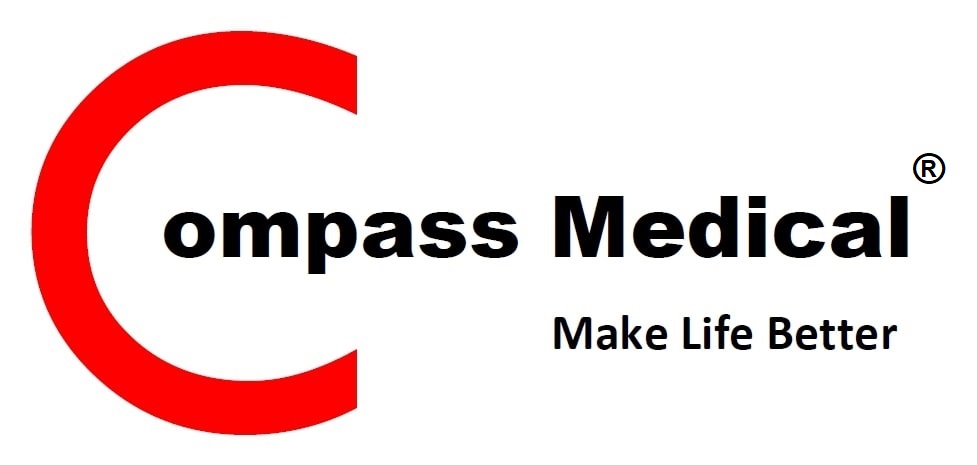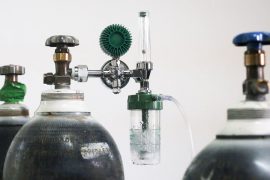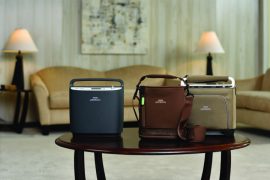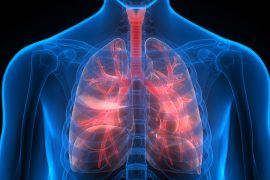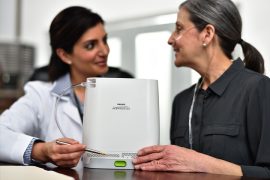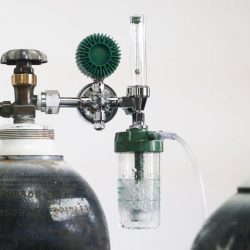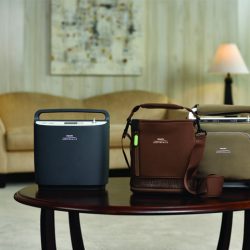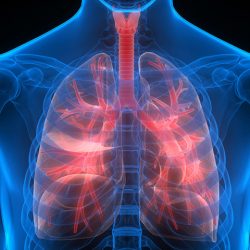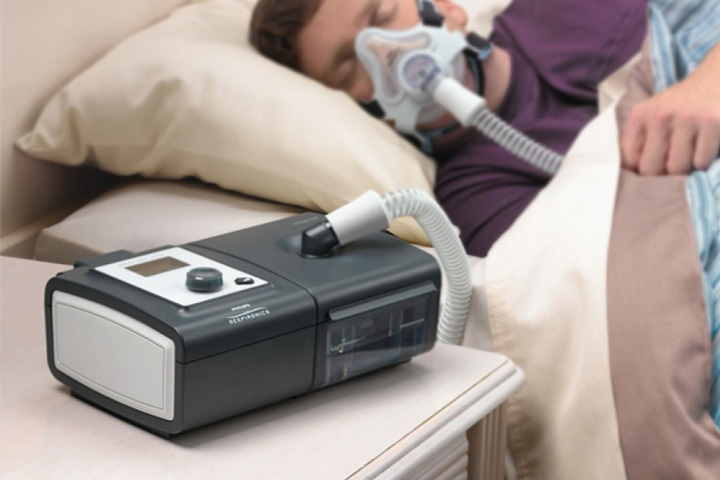

How CPAP machine works?
What is CPAP?
Continuous Positive Airway Pressure and without getting into a lot of physics, the basic principle is that by applying a tight fitting mask and using a regulator designed to provide a high flow of a variable or fixed oxygen concentration and most importantly by attaching a flow restriction device at the exhalation port of the mask, it is possible to have the patient’s airways placed under a constant level of pressure throughout the respiratory cycle.
What do you need to make CPAP work?
- Oxygen source capable of delivering 50 psi
- Flow regulator which delivers either a fixed or variable oxygen concentration. The flow generator works by what is known as the venturi effect. When you attach it to the primary regulator of the oxygen cylinder and deliver 50 psi through it, the device “sucks” in room air which is used to dilute the 100% oxygen from the cylinder.
- Tight fitting mask to which the oxygen/air mixture output of the generator is attached and applied to the patient.
- Positive End-Expiratory Pressure (PEEP) valve connected to the exhalation port which maintains a constant pressure in the circuit. Each PEEP valve is rated at a certain level measured in centimeters of water (cmH2O) usually in increments of 2.5. The most commonly used levels are 5 or 7.5.
What are the indications for CPAP use?
CPAP is indicated for the treatment of severe respiratory distress seen in chronic obstructive pulmonary disease (COPD), congestive heart failure (CHF) and to a lesser degree in asthma.
How does CPAP work for these conditions? To understand how it works, we need to briefly review the pathophysiology of these conditions.
In COPD, the lung has lost its normal elastic recoil and the alveoli and terminal bronchioles have become stiff with scar tissue. During a COPD exacerbation these terminal bronchioles collapse during exhalation leading to air trapping in the alveoli. This is why the COPD patient breathes through pursed lips and uses active muscle contraction to exhale. By doing so, they are keeping the pressure in the terminal bronchioles elevated to prevent their collapse.
In CHF, the left ventricle fails to keep up with the blood being sent to it from the lungs (preload) and/or the pressure against which it must pump (afterload). This may be the result of an unrecognized heart attack which is now decompensating, uncontrolled hypertension, valvular dysfunction, or fluid overload. Regardless, the pulmonary venous pressures rise and fluid is forced out of the pulmonary capillaries into the interstitial space between the capillaries and the alveoli. The fluid may even fill the alveoli further leading to the inability of the body to absorb oxygen and expel carbon dioxide.
In asthma there is bronchospasm and the work of breathing is increased as the patient strives to move air in and out of the lungs.
The feature common to all three of these conditions is the increased work of breathing and the inability to effectively remove carbon dioxide from the system. As COPD, CHF, and asthma worsens, the patient’s minute ventilation (size of each breath multiplied by the breaths per minute) goes down. Less air movement results in carbon dioxide levels rising which causes a narcotic like effect on the brain further diminishing ventilatory rate. The combined effects of fatigue and rising carbon dioxide in the system leads to further lowering of the ventilatory rate and the patient suffers a respiratory arrest.
What are the indications for CPAP use?
CPAP is indicated for the treatment of severe respiratory distress seen in chronic obstructive pulmonary disease (COPD), congestive heart failure (CHF) and to a lesser degree in asthma.
How does CPAP work for these conditions? To understand how it works, we need to briefly review the pathophysiology of these conditions.
In COPD, the lung has lost its normal elastic recoil and the alveoli and terminal bronchioles have become stiff with scar tissue. During a COPD exacerbation these terminal bronchioles collapse during exhalation leading to air trapping in the alveoli. This is why the COPD patient breathes through pursed lips and uses active muscle contraction to exhale. By doing so, they are keeping the pressure in the terminal bronchioles elevated to prevent their collapse.
In CHF, the left ventricle fails to keep up with the blood being sent to it from the lungs (preload) and/or the pressure against which it must pump (afterload). This may be the result of an unrecognized heart attack which is now decompensating, uncontrolled hypertension, valvular dysfunction, or fluid overload. Regardless, the pulmonary venous pressures rise and fluid is forced out of the pulmonary capillaries into the interstitial space between the capillaries and the alveoli. The fluid may even fill the alveoli further leading to the inability of the body to absorb oxygen and expel carbon dioxide.
In asthma there is bronchospasm and the work of breathing is increased as the patient strives to move air in and out of the lungs.
The feature common to all three of these conditions is the increased work of breathing and the inability to effectively remove carbon dioxide from the system. As COPD, CHF, and asthma worsens, the patient’s minute ventilation (size of each breath multiplied by the breaths per minute) goes down. Less air movement results in carbon dioxide levels rising which causes a narcotic like effect on the brain further diminishing ventilatory rate. The combined effects of fatigue and rising carbon dioxide in the system leads to further lowering of the ventilatory rate and the patient suffers a respiratory arrest.
How does it work?
CPAP works by “splinting” the lungs with a constant pressure of air which reduces the work of breathing. In CHF it forces the excess fluid out of the alveoli and interstitial space back into the vasculature as well as decreases venous return to the heart thereby lessening its workload.
CPAP is not as beneficial for asthma as it is for the other conditions we discussed. Fortunately, it is unlikely to hurt the patient and may help by decreasing the work of breathing. Pneumonia is another condition for which CPAP is not indicated but which may mimic the respiratory distress of COPD or CHF.
However, it too is unlikely to cause any harm and may actually increase aeration of the lungs.
What is the major benefit of CPAP?
The major benefit of CPAP is that it provides the lung ventilatory support while you are administering the specific therapy for the condition. In essence, it buys you time to treat the COPD, CHF, or asthma before the patient arrests. This is a very important point. Once CPAP is started, it is vital that you begin administering bronchodilators to the COPD and asthma patient and lasix and nitroglycerin to the CHF patient. CPAP, by keeping the airways open and facilitating ventilation, increases the delivery of agents such as albuterol to the lung. In CHF, it decreases myocardial workload while you administer nitroglycerin to lower the blood pressure thus reducing both preload and afterload on the heart which further reduces myocardial oxygen demand. What’s the bottom line? CPAP takes the patient who is close to needing intubation and rapidly reverses their condition. Studies have proven that CPAP dramatically reduces the need for intubation which is associated with significant complications and death in these patients.
How CPAP Work Link

